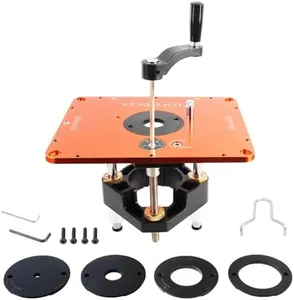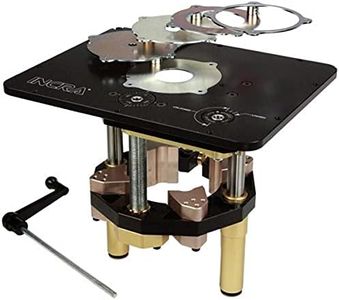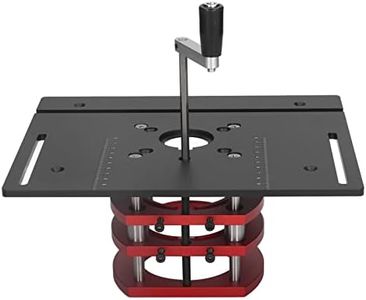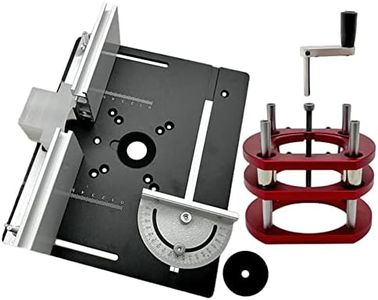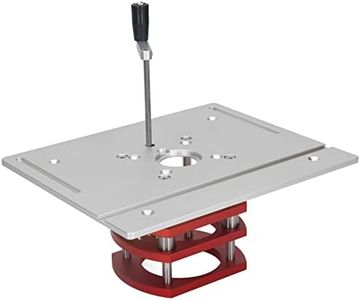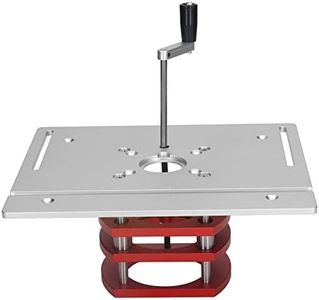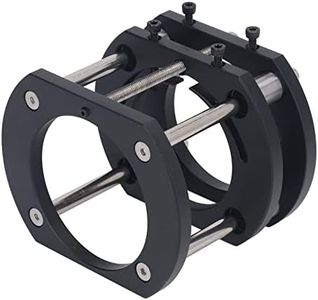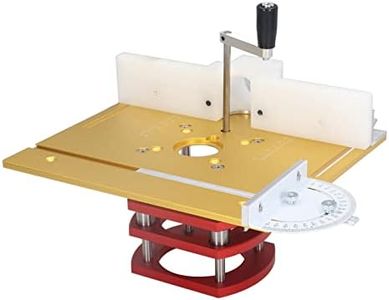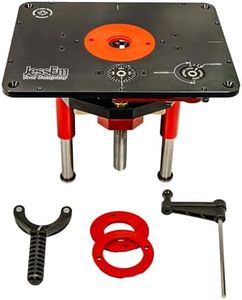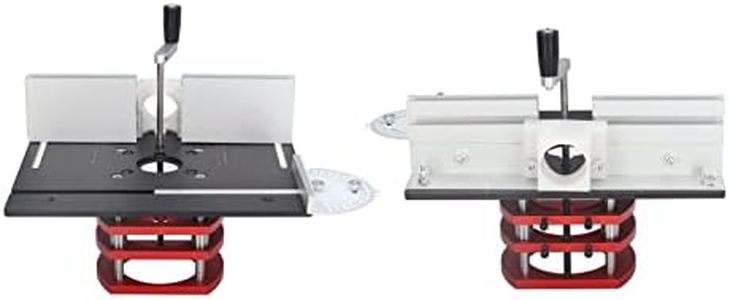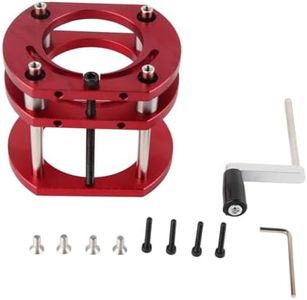We Use CookiesWe use cookies to enhance the security, performance,
functionality and for analytical and promotional activities. By continuing to browse this site you
are agreeing to our privacy policy
10 Best Router Table Lifts
From leading brands and best sellers available on the web.Buying Guide for the Best Router Table Lifts
Choosing the right router table lift is all about ensuring you get precision, ease of use, and durability for your woodworking projects. A router table lift allows you to make precise height adjustments to your router bit without having to reach underneath the table, which greatly increases both convenience and accuracy. When picking one, it's important to look beyond basic compatibility and consider how features relate to your workflow, the types of projects you work on, and your own comfort level with using woodworking equipment.CompatibilityCompatibility refers to whether the router table lift will fit both your router and your router table. Not all lifts are universal, so it’s important to check the list of supported router models and the size of your table’s cutout. Many lifts accommodate a range of routers, but some are designed for specific brands or sizes. When choosing, first know the make and model of your router and the dimensions of your table opening—this ensures a secure, stable fit and proper functionality.
Lift MechanismThe lift mechanism is how the router bit is raised or lowered and can vary in design, such as gear-driven, screw-driven, or dial-operated. A good lift mechanism allows for smooth, precise adjustments and prevents unwanted movement during operation. Some mechanisms offer micro-adjustment features for fine tuning, which is particularly useful for detailed work. If you regularly switch bit heights or need precise cuts, look for a lift with fine adjustment capability and easy-to-use controls.
Adjustment Range and PrecisionThis refers to how high or low you can move your router bit and how finely you can adjust this movement. More adjustment range can be helpful for using different bit sizes and profiles, while high precision lets you achieve exact cuts. A lift that offers both a wide range and precise incremental movement is ideal if you work with various project types and require accuracy. For simpler projects, extreme precision may not be necessary, but for joinery or inlay work, it becomes much more important.
Build Quality and MaterialsBuild quality is about how the lift is constructed, including the materials used (like aluminum, steel, or plastic) and the overall sturdiness. High-quality materials and workmanship ensure the lift can handle frequent use and maintain calibration over time. Heavier, metal constructions usually last longer and provide more stability. If you plan on heavy or frequent use, prioritize robust construction for safety and long-term performance.
Ease of Bit ChangesThis concerns how easy it is to change router bits with the lift installed. Some lifts allow above-the-table bit changes, meaning you don’t have to remove the router or pull the lift out to swap bits. This feature can save time and effort, especially if you need frequent bit changes during a project. If convenience and efficiency matter to you, or if you want to minimize time spent adjusting your equipment, consider lifts that emphasize easy bit access and changes.
Locking MechanismThe locking mechanism ensures that once you set the height, the router bit stays in place during operation. A strong, reliable locking system prevents drift and keeps your cuts consistent. Different lifts use various types of locks—cams, levers, or friction locks. For projects where precise, repeatable cuts are important, ensure the lift provides a firm, user-friendly lock that’s quick to engage and release.
